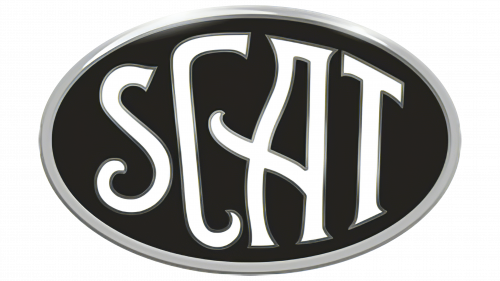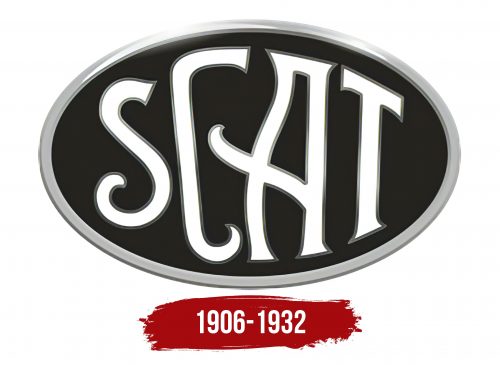The SCAT logo reflects the Italian character combined with innovative technologies. This unity produced an exclusive result—a retro-style emblem with metallic accents that showcases the combined expertise of professional engineers and racing drivers.
SCAT: Brand overview
In 1906, Società Ceirano Automobili Torino (SCAT) was founded in Turin, Italy. Giovanni Battista Ceirano, who had extensive experience in the automobile sector, created the business. Ceirano was one of the founders of Fiat and had founded multiple other automotive companies before this venture.
When the manufacturer first began operating, it produced passenger automobiles. The company’s debut model was a compact automobile with a 3.8-liter, four-cylinder engine. This car soon established a solid reputation as a dependable, high-quality vehicle.
1907, the company debuted a second model with a more potent 4.7-liter engine. This model faced competition from other esteemed brands of the era and was targeted at affluent consumers.
The company saw great success in 1908 when it started participating in auto races. Participating in races aided in both brand promotion and the technical development of the vehicles. The first notable victory in the Targa Florio race occurred that year, greatly raising the brand’s profile.
In 1909, a six-cylinder engine variant was added to the range of products. This vehicle strengthened the company’s standing in the premium market category because it was among Italy’s most potent and abundant vehicles at the time.
The company saw rapid expansion during the 1910s. It kept enhancing its models, emphasizing dependability and performance. Around this time, it also started exporting its automobiles to the US and other European nations.
World War I (1914–1918) significantly impacted the operations. Like many others, the company shifted to making army vehicles and equipment. This experience helped improve technology and manufacturing methods.
After the war, the company resumed making consumer cars. In 1919, a new model using a 2.3-liter four-cylinder engine was released, and it became one of the most popular models in the company’s history.
The 1920s presented new difficulties. The business faced more competition from international and Italian producers. The company maintained a devoted clientele and continued making high-quality automobiles despite this.
In 1923, the company merged with Ceirano, another Turin-based automaker started by Giovanni Battista Ceirano’s brother. The goal of this merger was to improve both businesses’ market standing.
However, the late 1920s economic crisis badly hit the company. The business was experiencing diminishing sales and financial troubles. Efforts were made to update its model lineup and modernize production, but the financial obstacles proved insurmountable.
The company ended its 26-year existence in 1932. About 15,000 automobiles were built during that time, which was a noteworthy accomplishment for a small Italian manufacturer.
Meaning and History
What is SCAT?
Giovanni Ceirano, a notable figure in early Italian automotive history, founded one of the Italian automakers based in Turin. The company was renowned for producing various vehicles with excellent technical and performance characteristics, including racing and passenger cars. The brand became well-known for participating in numerous motorsport championships, achieving significant victories across Europe. The cars were celebrated for their reliability and advanced features for their time.
1906 – 1932
Società Ceirano Automobili Torino is the full name behind the abbreviation SCAT, which the designers used as the basis for the logo. They placed it in the center to signify that this brand represents the pinnacle of excellence and success in the automotive racing world. The cars won top awards in prestigious competitions three times in a row. This remarkable start made renowned automakers consider the emergence of a strong competitor.
The font chosen for the emblem embodies Italian sophistication: all the letters are narrow, tall, elegant, and somewhat stylish, hinted at by the curved ends. Each glyph is unique, with its distinctive feature. For instance, the “T” has a tilted cap, the “A” has a winding contour and an extended crossbar, and the “C” has a pointed lower end and an extended upper part to the right. Only the “S” looks familiar, resembling a hook.
The white letters are outlined in gray and placed in a black oval, explaining their curvature as the designers tried to fit the large inscription into a small space. The ellipse, reminiscent of a horizontal medallion, has a narrow frame – silvery, shiny, with a metallic texture. This way, the Italian manufacturer emphasized their cars’ exceptional reliability and safety.





